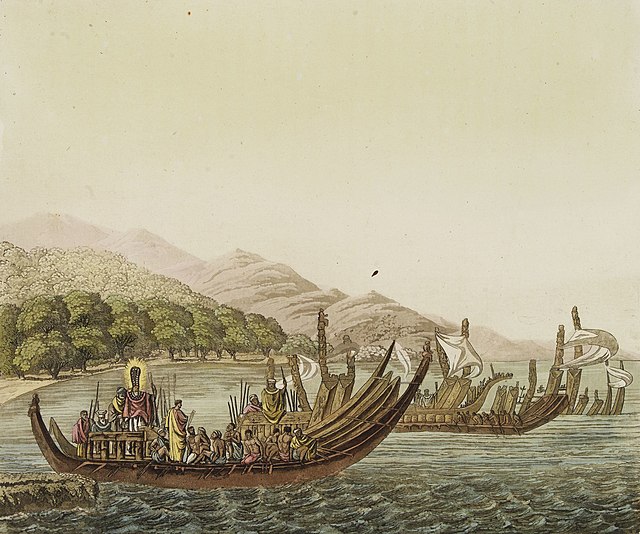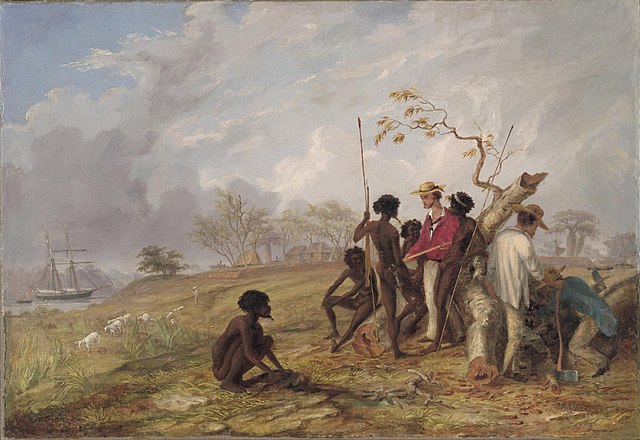Polynesians are an ethnolinguistic group of closely related ethnic groups who are native to Polynesia, an expansive region of Oceania in the Pacific Ocean. They trace their early prehistoric origins to Island Southeast Asia and form part of the larger Austronesian ethnolinguistic group with an Urheimat in Taiwan. They speak the Polynesian languages, a branch of the Oceanic subfamily of the Austronesian language family. The Indigenous Māori people constitute the largest Polynesian population, followed by Samoans, Native Hawaiians, Tahitians, Tongans and Cook Islands Māori.
1827 depiction of Tahitian pahi double-hulled war canoes
Female dancers of the Hawaii Islands depicted by Louis Choris, c. 1816
A portrait of Māori man, by Gottfried Lindauer.
Kava ('ava) makers (aumaga) of Samoa. A woman seated between two men with the round tanoa (or laulau) wooden bowl in front. Standing is a third man, distributor of the 'ava, holding the coconut shell cup (tauau) used for distributing the beverage.
Indigenous peoples of Oceania
The Indigenous peoples of Oceania are Aboriginal Australians, Papuans, and Austronesians. These indigenous peoples have a historical continuity with pre-colonial societies that developed on their territories. With the notable exceptions of Australia, New Zealand, Hawaii, New Caledonia, Guam, and Northern Mariana Islands, indigenous peoples make up the majority of the populations of Oceania.
Moai in Ahu Tongariki, Rapa Nui
Māori child learning the haka in a painting by Gottfried Lindauer
Dani people from the central highlands of New Guinea
Thomas Baines with Aborigines near the mouth of the Victoria River








